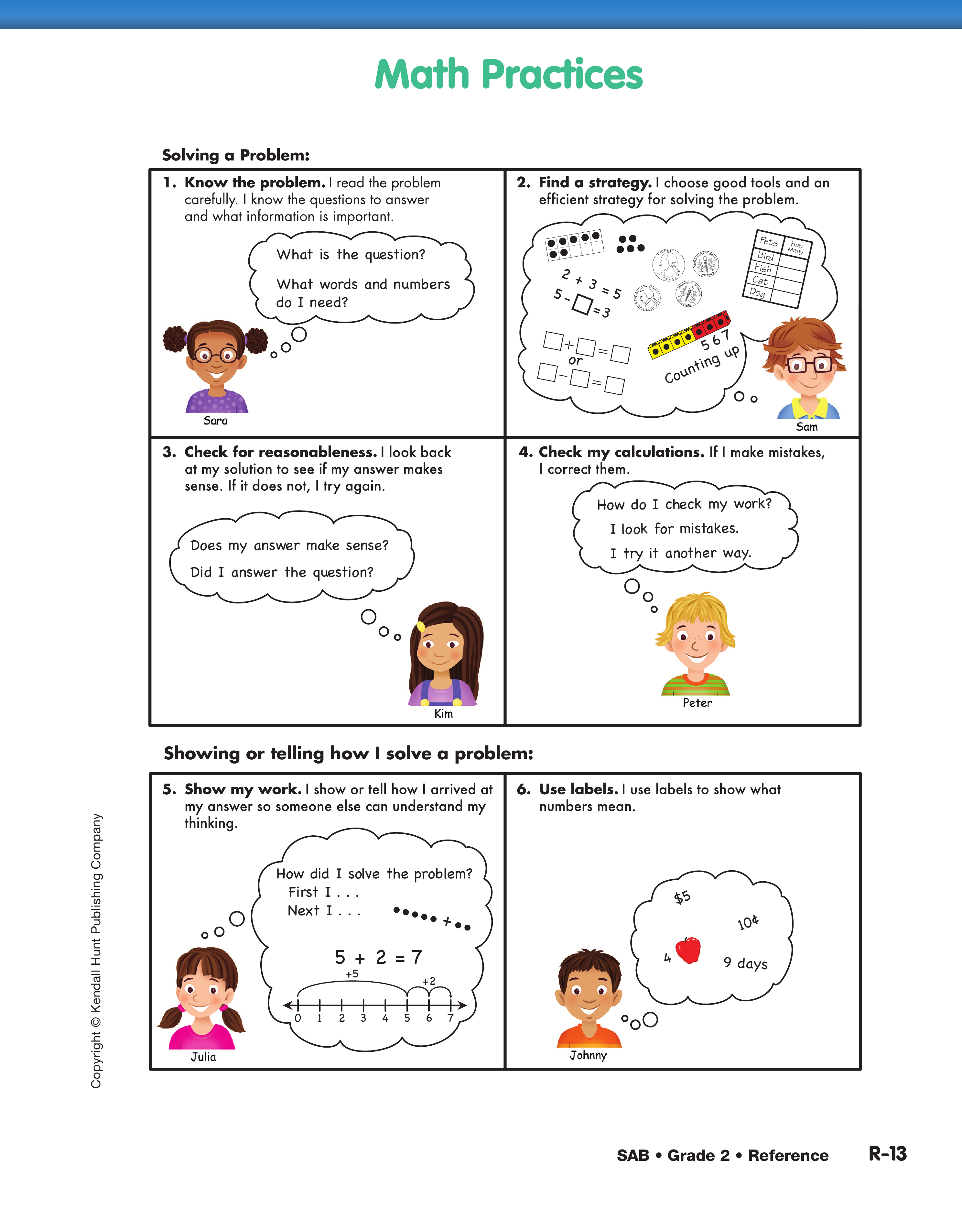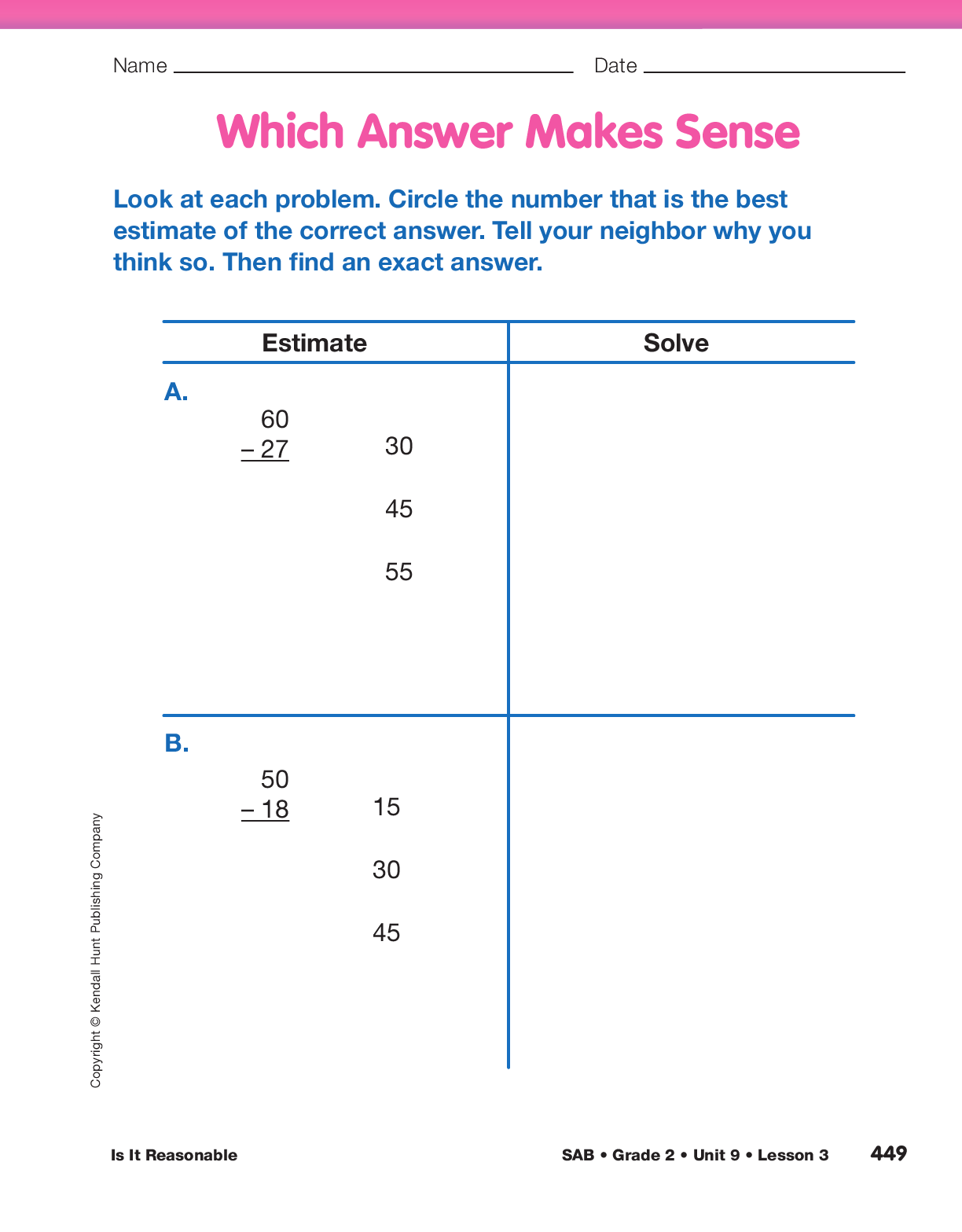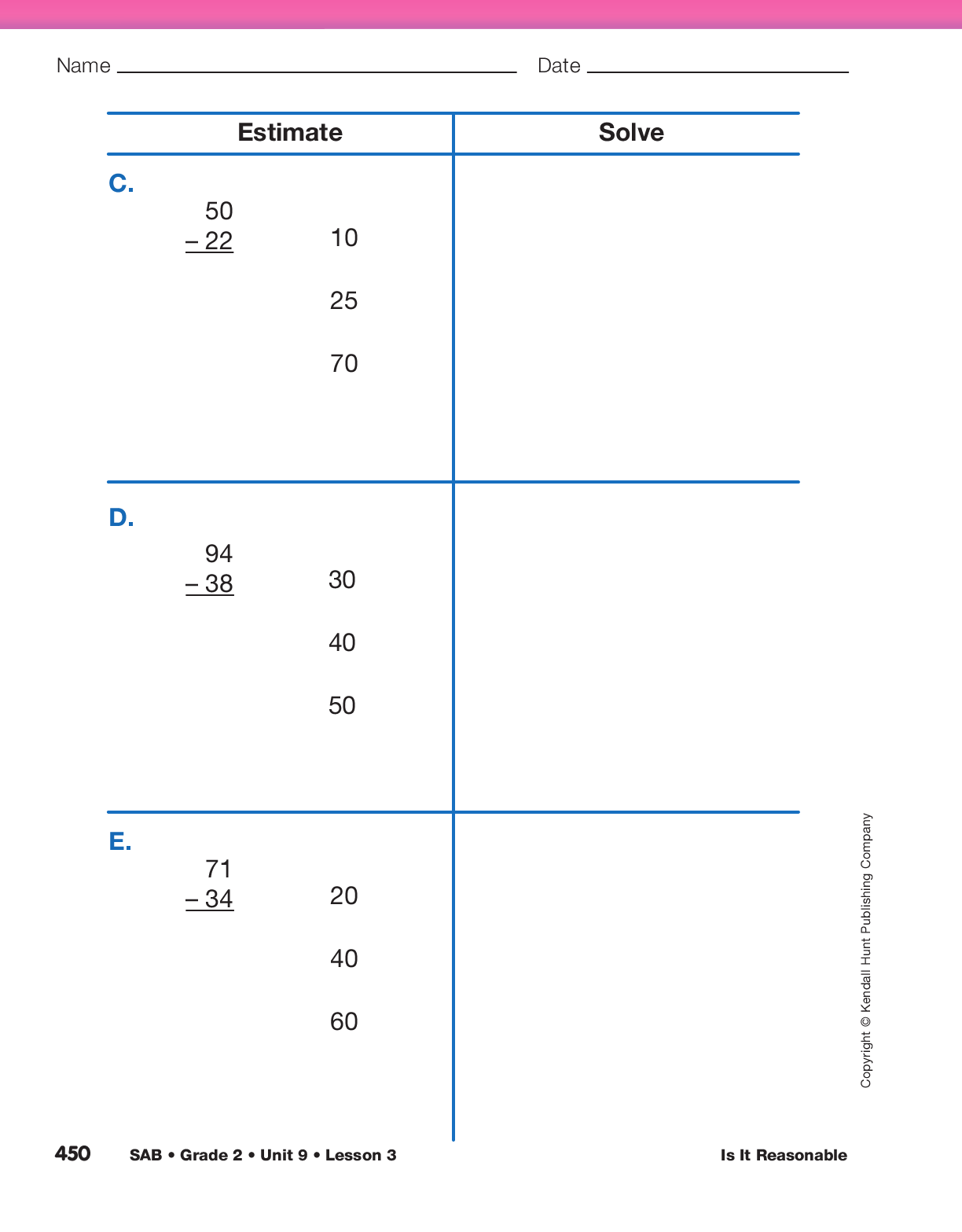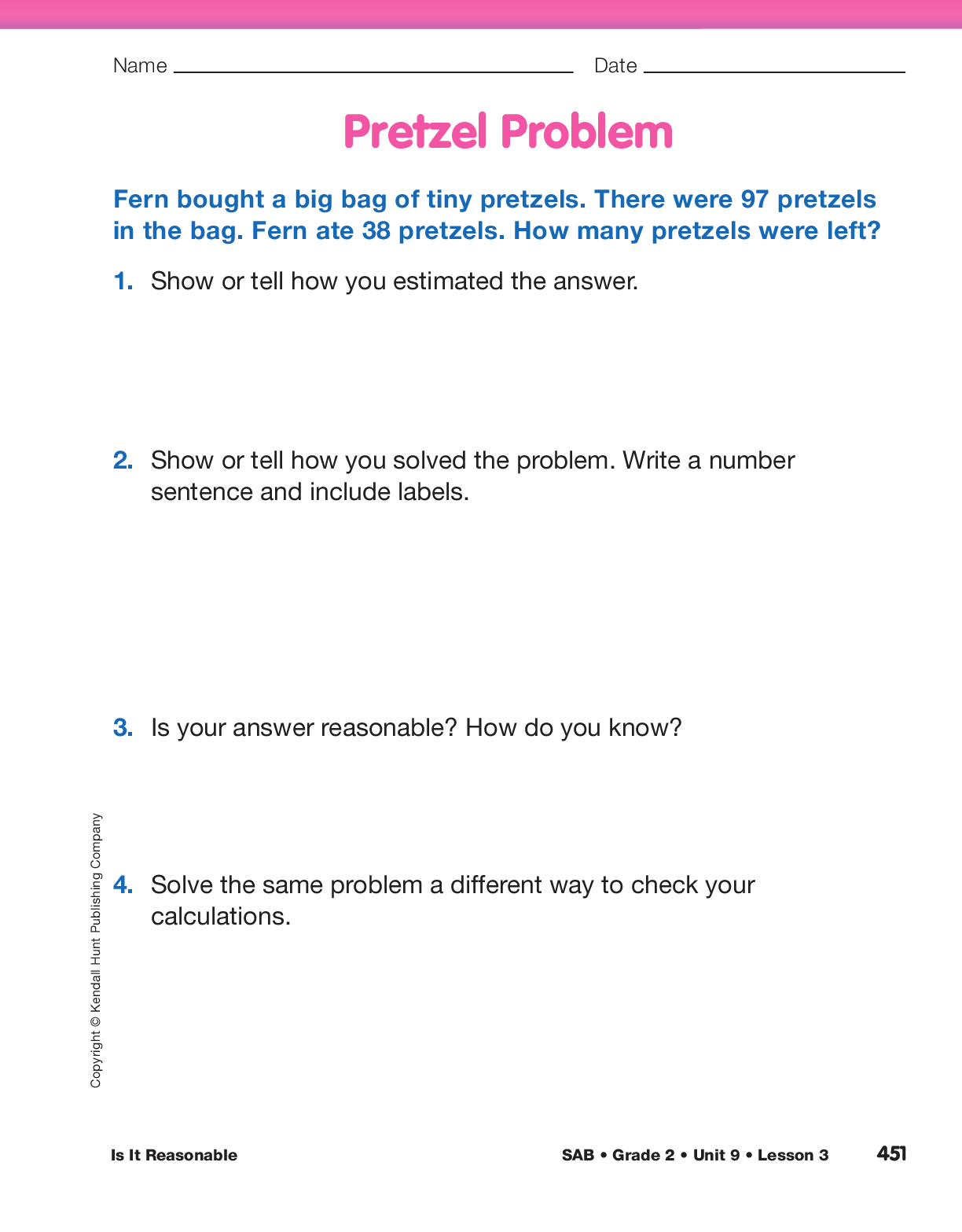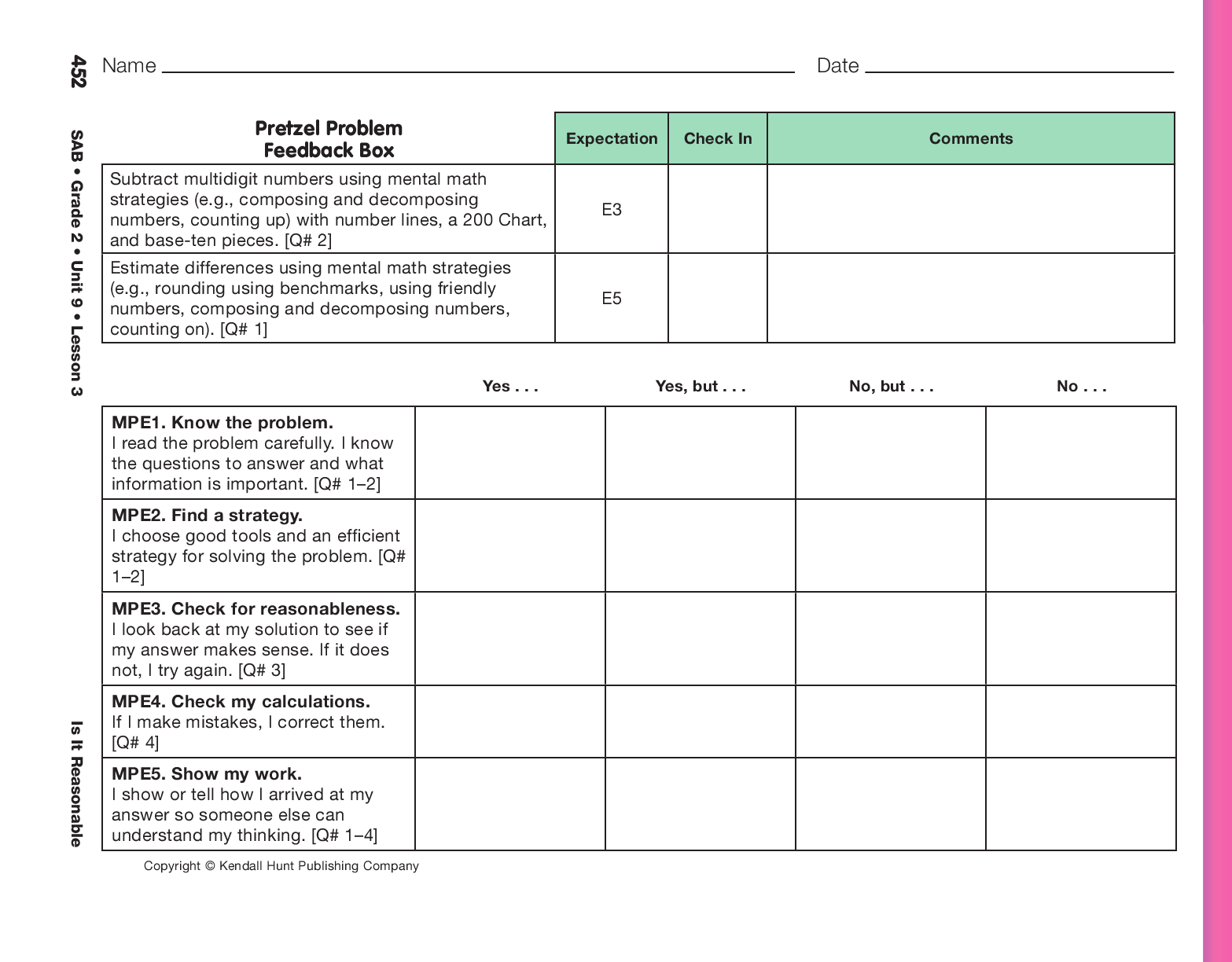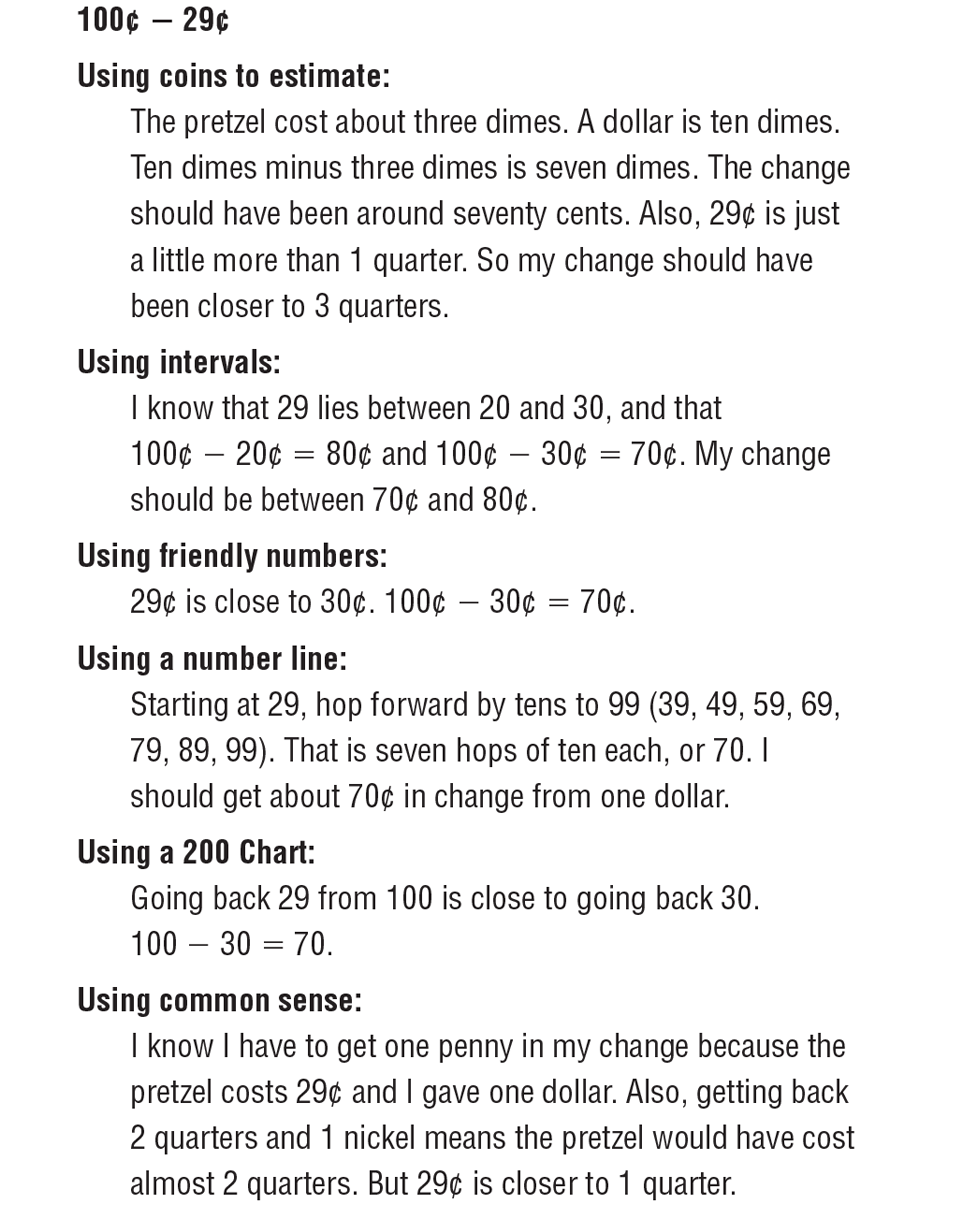Is It Reasonable
Est. Class Sessions: 1–2Developing the Lesson
Estimate to Check Reasonableness. Read the following scenario aloud:
- I stopped at a pretzel stand. The pretzel I wanted cost 29¢. I gave the seller one dollar. He handed me back 2 quarters and 1 nickel. I told him that he had returned the wrong amount because I knew my change should have been about 70¢.
Ask:
Record the number sentence on the board.
Encourage students to describe their estimation strategies. List the strategies suggested on the board or chart paper. Some possible strategies are shown in Figure 1.
Display the Subtraction Strategies Chart from Lesson 2. Have students refer to it as they solve subtraction problems. See Content Note.
Ask:
Choose an Estimate. Write the numbers 40, 55, and 65 on the board next to the following subtraction problem:
72− 15
Ask:
Display and direct students’ attention to the Math Practices page in the Student Activity Book Reference section. Remind them that Math Practice Expectation 3, Check for reasonableness, focuses on looking back at an answer to see if it makes sense.
Now that students have determined that 55 is a reasonable difference, ask them to use any subtraction strategy to find an exact answer to the problem. The reasonable estimate will help students identify when a mistake may have been made.
Have students look at their answers, or have a volunteer demonstrate how he or she solved the problem, and ask:
Direct students’ attention back to the Math Practices display.
Focus on Math Practice Expectation 4, Check my calculations.
Continue estimating answers for subtraction problems. Give students answer choices for which they have to determine whether the answers are reasonable. Some possible examples are:
84 − 29 (30, 50, 70) 63 − 18 (40, 50, 60)
Ask students to estimate which of the three numbers is a reasonable solution for each problem. Discuss each number and ask students to explain why it is or is not reasonable.
Assign the Which Answer Makes Sense pages in the Student Activity Book to student pairs. Students find the best estimate for each problem. Encourage them to explain to a partner how they determined the best estimate for each problem. Then students will find an exact answer to the problem using any subtraction strategy they choose.
Estimate and Solve. Present this word problem to the class:
- You buy a jumbo pretzel that costs 59 cents. You pay with three quarters. How much money should you get back from the seller?
Have students discuss the problem with a partner, then ask:
Instead of giving students answer choices, ask them to estimate the difference with their partner. As students work, circulate and look for examples of a variety of estimation strategies.
Select several student volunteers to share how they estimated, recording their work on chart paper. Try to have examples of different strategies such as using coins, intervals, number lines, the 200 Chart, and using friendly numbers. See Figure 1 for several estimation strategies.
Finally, ask students to find an exact answer to the problem. As described in MPE6, Use labels, remind students to include a label in their answer so that it is clear what the numbers mean.
Ask a student volunteer to show his or her subtraction solution and ask:
Remind students of Math Practice 4, Check my calculations. If after comparing their estimate to their answer any students feels like they made a mistake, encourage them to solve the problem again using a different strategy.
Assign the Pretzel Problem page in the Student Activity Book for students to complete individually. Encourage them to use a 200 Chart, number lines, base-ten pieces, friendly numbers, or any other tool or strategy you have used in class to help them estimate and solve the problem. They may refer to the list of estimation strategies the class made on chart paper, the Subtraction Strategies Chart from Lesson 2, and the Math Practices page in the Student Activity Book Reference section.














